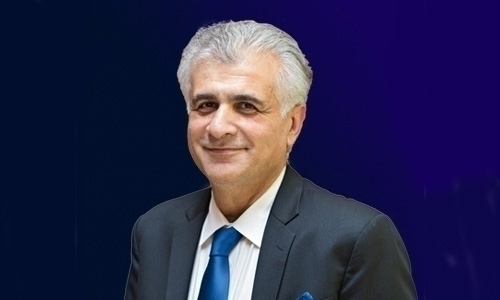LinkedIn profile
LinkedIn is certainly the leading online tool available for executive job hunters. However, the tool is only effective as you make. It is all too frequent that aspiring executives shoot themselves in the foot by making poor decisions with their LinkedIn profile, ruining their career prospects before they even had a chance. Make sure your LinkedIn profile is optimised completely by avoiding these most serious LinkedIn mistakes.
1. A poor top-fold
The profile picture, background, headline, and summary are the first things that will be seen when a hiring manager or recruiter reviews your LinkedIn profile. These sections can be referred to as the top-fold.
Hiring managers and recruiters will not scroll past the top-fold and look at the rest of your profile if they aren’t impressed by the top-fold. These means they may never see your work history and education/ certifications, which may be the strongest elements of your executive candidacy.
Unfortunately, many business professionals treat LinkedIn like Facebook or Twitter. These people may have inappropriate photos and headlines- or worse, none at all. When developing your profile’s top-fold, keep things simple and professional. Remember that recruiters are skimmers; they don’t want flash, just the facts.
2. Wordiness
Overly detailed, lengthy paragraphs aren’t appropriate for LinkedIn profiles. For instance, if your professional summary is more than four or five sentences long, then it isn’t really a summary!
Simplify your content and focus on your keywords to create density. A long-winded LinkedIn profile will actually work against you, because this practice will dilute your keyword density. Further, many recruiters won’t take the time to time to read through your lengthy statement.
3. Subjective, narcissistic statements
While the point of your LinkedIn profile is to put your best foot forward in terms of personal branding, it is possible to go overboard with your descriptions. For example, stating that you are a “proficient self-starter with remarkable multi-tasking abilities and an incredible attention to details,” does not convey the ambition and character you possess; instead, it can make you sound pompous and silly. It’s also annoying to many recruiters who have the reaction of because their reaction is, “Says who?”
It is the recruiter’s job to determine your aptitude and skill level. When you sell yourself with subjective and narcissistic assertions, you come across as going over-the-top and trying too hard. Let your professional skills and actions speak for themselves.
4. No statistics to validate your business savvy
The easiest way to minimize the text in a LinkedIn profile is to share the facts. Further, research has indicated that numbers are easier to read on a LinkedIn profile. The more you have, the more impressive you credentials are.
Recruiters need to compare executive candidates by a common denominator. Listing your accomplishments in a quantifiable way is the easiest way for them to compare you to others. When you can quantify your professional accomplishments, you’re giving the executive recruiter exactly what they need to evaluate your abilities.
5. Not asking for recommendations
A mistake a lot of individuals make is not directly reaching out to connections for recommendations. This is a huge missed opportunity, as having professional recommendations on your LinkedIn profile increases your credibility.
If you had a positive business experience with a client or supervisor, ask them to recommend you on LinkedIn. You can send a message via a standard template provided by LinkedIn. However, it is advantageous to send a customised recommendation request. Explain the reasons you are asking for the recommendation, and perhaps offer to reciprocate and recommend the other individual in return. Be sure to follow through with this reciprocation if you make such a pact.
Your professional brand on LinkedIn matters. If you are aspiring for a new executive role, do not fall victim to one of these serious LinkedIn mistakes. Your personal brand on LinkedIn matters. By eliminating these aspects from your LinkedIn profile, you will instantly become a most competitive candidate for your career opportunities and advancement.
Related Posts

